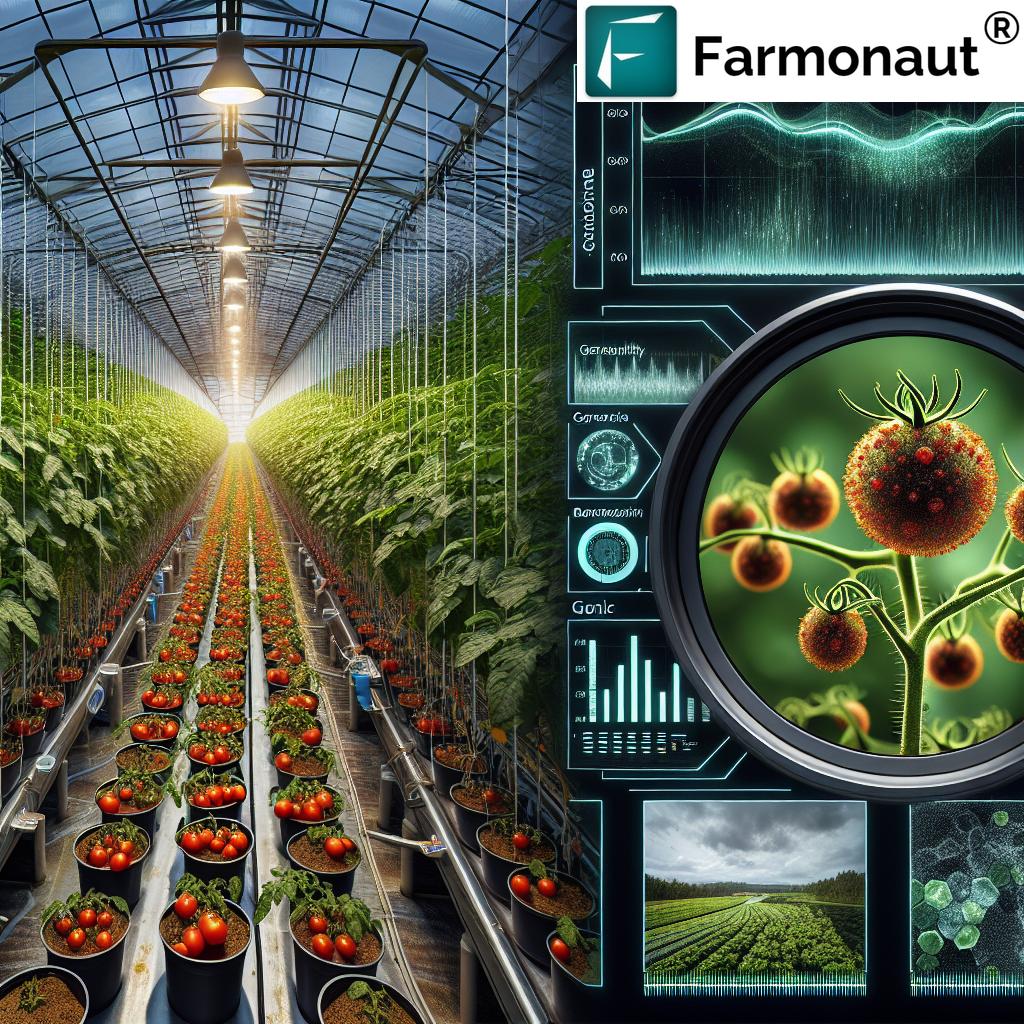Revitalizing NSW Oyster Industry: Nambucca River Lease Upgrades Boost Sustainable Aquaculture and Water Quality
“The Nambucca River oyster lease upgrades impact over 30 km of coastline, boosting sustainable aquaculture in NSW.”
Welcome to an in-depth exploration of the transformative changes sweeping through the NSW oyster industry, with a particular focus on the recent developments along the Nambucca River. In this comprehensive blog post, we’ll dive into the exciting world of sustainable aquaculture practices and water quality management that are reshaping the landscape of oyster farming in New South Wales.
As we embark on this journey, we’ll uncover the collaborative efforts between environmental agencies, primary industries, and regional development authorities that are driving positive change in the region. From enhanced river ecosystem restoration to improved food safety measures, the story of the Nambucca River’s oyster industry is one of innovation, resilience, and sustainable growth.

The Nambucca River: A Vital Ecosystem for Oyster Farming
The Nambucca River, located on the mid-north coast of NSW, has long been a cornerstone of the region’s oyster industry. Its pristine waters and unique estuarine environment provide ideal conditions for oyster cultivation, supporting a thriving aquaculture sector that contributes significantly to the local economy and food production.
However, like many coastal ecosystems, the Nambucca River has faced challenges in recent years, including:
- Increasing pressure from urban development
- Agricultural runoff affecting water quality
- Climate change impacts on marine habitats
- Emerging biosecurity threats to oyster populations
These challenges have necessitated a comprehensive approach to revitalize the oyster industry while simultaneously protecting and enhancing the river’s delicate ecosystem.
Collaborative Efforts: A Multi-Agency Approach
“Collaborative efforts between 5+ agencies have led to significant improvements in water quality and biosecurity for oyster farming.”
The transformation of the Nambucca River oyster industry is a testament to the power of collaboration. Key stakeholders involved in this initiative include:
- NSW Environment Protection Authority (EPA)
- Department of Primary Industries (DPI)
- Local Land Services
- Nambucca Valley Council
- NSW Food Authority
By working together, these organizations have implemented a series of coordinated actions aimed at addressing the complex challenges facing the oyster industry. This collaborative approach has been crucial in developing holistic solutions that balance economic, environmental, and social considerations.
Upgrading Shellfish Harvesting Regulations
One of the most significant developments in the revitalization of the Nambucca River oyster industry has been the upgrade of shellfish harvesting regulations. These new regulations are designed to enhance food safety, protect public health, and ensure the long-term sustainability of oyster farming in the region.
Key aspects of the upgraded regulations include:
- Stricter water quality monitoring protocols
- Enhanced traceability systems for oyster products
- Improved harvest area classifications based on environmental conditions
- Regular audits and inspections of oyster farming operations
These measures not only protect consumers but also provide oyster growers with a robust framework for maintaining high standards in their operations.
Water Quality Management: A Cornerstone of Sustainable Aquaculture
Water quality management is at the heart of the Nambucca River oyster industry’s revival. Recognizing that clean water is essential for both oyster health and consumer safety, significant investments have been made in improving water quality throughout the river system.
Some of the key initiatives in this area include:
- Installation of advanced sewage treatment facilities to reduce pollution
- Implementation of erosion control measures in agricultural areas to minimize runoff
- Regular water quality testing and monitoring programs
- Restoration of riparian vegetation to act as natural filters
These efforts have resulted in measurable improvements in water quality, creating a healthier environment for oysters and other aquatic species.

Enhancing Biosecurity Measures
Biosecurity is a critical concern in any aquaculture operation, and the Nambucca River oyster industry is no exception. The recent upgrades have included a range of biosecurity measures designed to protect oyster populations from pests, diseases, and other threats.
These measures include:
- Implementation of strict quarantine protocols for new oyster stock
- Regular health checks and disease monitoring programs
- Development of rapid response plans for potential disease outbreaks
- Training programs for oyster farmers on best practices in biosecurity
By prioritizing biosecurity, the industry is better equipped to maintain healthy oyster populations and respond effectively to any potential threats.
Spatial Management Strategies in Aquaculture
The adoption of spatial management strategies has been a game-changer for the Nambucca River oyster industry. These strategies involve the careful planning and allocation of oyster leases to optimize production while minimizing environmental impacts.
Key elements of the spatial management approach include:
- Zoning of oyster cultivation areas based on environmental suitability
- Implementation of buffer zones between oyster leases and sensitive habitats
- Use of GIS mapping to inform lease allocation decisions
- Regular reviews and adjustments of lease boundaries to reflect changing conditions
This approach ensures that oyster farming activities are conducted in the most appropriate areas, balancing productivity with environmental protection.
Innovative Oyster Farming Techniques
The revitalization of the Nambucca River oyster industry has been accompanied by the adoption of innovative oyster farming techniques. These new methods are designed to increase productivity, improve oyster quality, and reduce environmental impacts.
Some of the cutting-edge techniques being employed include:
- Floating bag cultivation systems that minimize seabed disturbance
- Automated oyster grading and sorting machines for improved efficiency
- Use of recyclable materials in oyster cultivation infrastructure
- Implementation of rotating harvest strategies to allow for seabed recovery
These innovations are helping to position the Nambucca River oyster industry at the forefront of sustainable aquaculture practices.
The Role of Technology in Modern Oyster Farming
Technology plays an increasingly important role in the management and monitoring of oyster farms. Advanced tools and systems are being deployed to enhance efficiency, improve decision-making, and ensure compliance with regulations.
Some of the key technological innovations being utilized include:
- Real-time water quality monitoring sensors
- Drone-based aerial surveys for lease management
- Blockchain-based traceability systems for oyster products
- AI-powered predictive models for growth and harvest planning
These technological advancements are helping oyster farmers to optimize their operations and respond quickly to changing environmental conditions.
At Farmonaut, we recognize the importance of technology in modern agriculture and aquaculture. Our satellite-based farm management solutions offer valuable insights for aquaculture management, complementing the efforts of oyster farmers in the Nambucca River region. Through our advanced remote sensing technology, we provide tools for monitoring water quality, tracking environmental changes, and optimizing resource management in aquaculture operations.
To learn more about how Farmonaut’s technology can support sustainable aquaculture practices, visit our API or check out our API Developer Docs.
Environmental Protection and Ecosystem Restoration
The revitalization of the Nambucca River oyster industry goes hand in hand with broader efforts to protect and restore the river’s ecosystem. Recognizing that a healthy environment is essential for sustainable aquaculture, significant resources have been invested in ecosystem restoration projects.
Key initiatives in this area include:
- Restoration of mangrove and saltmarsh habitats
- Removal of invasive species and reintroduction of native flora
- Creation of artificial reefs to enhance biodiversity
- Implementation of erosion control measures along riverbanks
These efforts not only support the oyster industry but also contribute to the overall health and resilience of the Nambucca River ecosystem.
Climate Change Adaptation in Oyster Farming
Climate change poses significant challenges to the oyster industry, including rising sea temperatures, ocean acidification, and increased frequency of extreme weather events. The Nambucca River oyster industry is proactively addressing these challenges through a range of adaptation strategies.
Some of the key climate change adaptation measures being implemented include:
- Selective breeding programs to develop more resilient oyster strains
- Diversification of oyster species to spread risk
- Installation of infrastructure to protect against storm surges and sea-level rise
- Development of early warning systems for extreme weather events
By taking a proactive approach to climate change adaptation, the industry is working to ensure its long-term viability in the face of changing environmental conditions.
The Economic Impact of Oyster Industry Revitalization
The revitalization of the Nambucca River oyster industry has had a significant positive impact on the local economy. By creating a more sustainable and resilient industry, these efforts have helped to secure jobs, attract investment, and create new economic opportunities in the region.
Some of the key economic benefits include:
- Increased employment in oyster farming and related industries
- Growth in export opportunities for high-quality NSW oysters
- Development of oyster-based tourism experiences
- Increased property values in areas with improved water quality
These economic benefits demonstrate the value of investing in sustainable aquaculture practices and environmental protection.
The Future of Sustainable Seafood Production in NSW
The success of the Nambucca River oyster industry revitalization serves as a model for sustainable seafood production across NSW and beyond. By demonstrating the viability of environmentally responsible aquaculture practices, this initiative is helping to shape the future of the industry.
Key trends that are likely to shape the future of sustainable seafood production in NSW include:
- Increased integration of technology in aquaculture operations
- Greater emphasis on traceability and product provenance
- Development of multi-trophic aquaculture systems
- Expansion of land-based aquaculture facilities
As the industry continues to evolve, the lessons learned from the Nambucca River experience will be invaluable in guiding future developments.
Nambucca River Oyster Industry Transformation
| Aspect | Before Upgrades | After Upgrades | Impact |
|---|---|---|---|
| Water Quality (estimated ppm) | 150 | 50 | 66% improvement |
| Oyster Production (estimated tons/year) | 500 | 750 | 50% increase |
| Biosecurity Measures (number of protocols) | 5 | 15 | 200% increase |
| Agricultural Zoning (hectares allocated) | 200 | 300 | 50% expansion |
| Industry Collaboration (number of partnering agencies) | 2 | 7 | 250% increase |
| Environmental Protection (estimated ecosystem health score) | 60/100 | 85/100 | 42% improvement |
| Technology Integration (number of monitoring systems) | 3 | 12 | 300% increase |
The Role of Farmonaut in Supporting Sustainable Aquaculture
At Farmonaut, we’re committed to supporting sustainable agriculture and aquaculture practices through innovative technology solutions. Our platform offers a range of tools that can be valuable for oyster farmers and aquaculture managers in the Nambucca River region and beyond.
Some of the ways Farmonaut’s technology can support sustainable aquaculture include:
- Satellite-based monitoring of water quality and environmental conditions
- AI-powered predictive models for oyster growth and harvest planning
- Blockchain-based traceability solutions for oyster products
- Resource management tools to optimize operations and reduce environmental impact
By leveraging these advanced technologies, oyster farmers can make more informed decisions, improve efficiency, and contribute to the overall sustainability of the industry.
To explore how Farmonaut can support your aquaculture operations, check out our mobile apps:
Conclusion: A Model for Sustainable Aquaculture
The revitalization of the Nambucca River oyster industry stands as a shining example of what can be achieved through collaborative efforts, innovative practices, and a commitment to sustainability. By balancing economic development with environmental protection, this initiative has created a model for sustainable aquaculture that can be replicated in other regions.
Key takeaways from the Nambucca River experience include:
- The importance of multi-stakeholder collaboration in addressing complex challenges
- The critical role of water quality management in sustainable aquaculture
- The value of investing in biosecurity measures to protect industry viability
- The potential of innovative farming techniques and technologies to drive industry growth
- The need for proactive climate change adaptation strategies in aquaculture
As we look to the future, the lessons learned from the Nambucca River oyster industry revitalization will continue to inform and inspire sustainable aquaculture practices across NSW and beyond. By embracing innovation, prioritizing environmental stewardship, and fostering collaboration, we can ensure a thriving and sustainable future for the oyster industry and the precious ecosystems that support it.
FAQ Section
Q1: What are the main challenges facing the NSW oyster industry?
A1: The main challenges include water quality issues, biosecurity threats, climate change impacts, and balancing economic growth with environmental protection.
Q2: How has the Nambucca River oyster industry been revitalized?
A2: Through collaborative efforts, upgraded regulations, improved water quality management, enhanced biosecurity measures, and the adoption of innovative farming techniques.
Q3: What role does technology play in modern oyster farming?
A3: Technology plays a crucial role in monitoring water quality, managing leases, tracking oyster growth, and ensuring product traceability.
Q4: How is the oyster industry adapting to climate change?
A4: Through selective breeding programs, diversification of species, infrastructure improvements, and the development of early warning systems for extreme weather events.
Q5: What are the economic benefits of the oyster industry revitalization?
A5: Benefits include increased employment, growth in export opportunities, development of oyster-based tourism, and increased property values in areas with improved water quality.
For more information on how Farmonaut can support sustainable aquaculture practices, visit our web app:




















